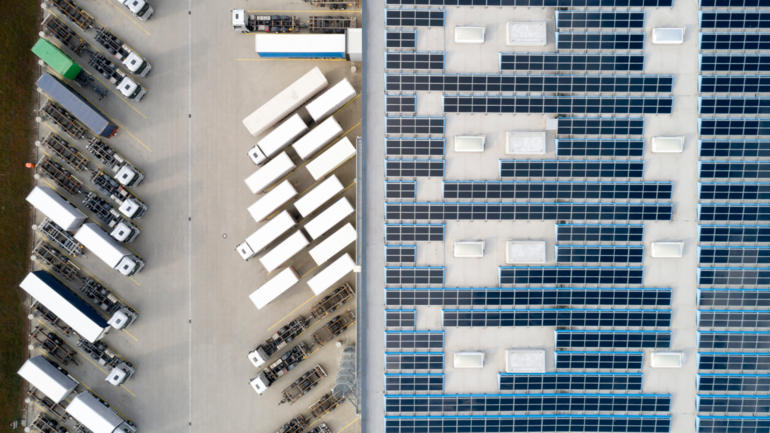- The auto industry has driven technological and manufacturing revolutions.
- With the shift to electric vehicles and the circular economy, automakers are poised to once again create a template for the global economy.
While the growth in electric cars is happening faster than we thought, truly meeting climate goals will take riding the momentum of another big transition – one to the circular economy. Leaning into these parallel shifts could spark a revolution in how cars are made and used.
A circular economy is an economic system that aims to eliminate waste throughout an entire value chain – including throughout manufacturing, production and use. Its value comes in preserving raw materials and eradicating waste altogether. By contrast, our current ‘linear economy’ transforms raw materials into products that are made, used and disposed of, finding value in producing and selling as many goods as possible.
Embracing the circular economy has become even more critical since COVID-19 has hit economies hard, putting pressure on consumers and manufacturers and driving home the need to be watchful of resources. In fact, one recent survey of supply chain professionals found that 51% expect the focus on circular economy strategies to increase over the next two years. Those surveyed from large companies (with revenues of more than $25 billion or more) had more optimism for this growth in the circular economy than mid-size organizations, perhaps signaling the opportunity for organizations with both resources and appetite for risk.
Transitioning away from the ‘linear economy’ means systems-wide changes, including decarbonizing production and designing products for recyclability at ‘end of life’. For the automobile industry, it means achieving transformation at the scale of Henry Ford’s legendary assembly line, or Toyota’s famous ‘Just In Time’ production system, one that timed manufacturing to dealer orders to minimize parts inventory.
Since its inception, the automotive industry has led both process revolutions and technological innovation. As the industry adopts the technologies of tomorrow, it is poised to once again create a template for the global economy to reference and follow.
The Circular Cars Initiative (CCI) embodies this ambition for the auto industry. It represents a coalition of more than 60 automakers, suppliers, research institutions, NGOs and international organizations committed to realizing this near-term ambition. A new series of circularity “roadmaps”, developed in collaboration with the World Economic Forum, the World Business Council for Sustainable Development (WBCSD), McKinsey & Co. and Accenture Strategy, explain the specifics of this transition.
The CCI, and its 60 partners, developed three framework reports to help industry and regulators better understand this new, more sustainable future.
The first report, by the World Economic Forum with inputs from WBCSD and Systemiq is titled The Road Ahead: A policy research agenda for automotive circularity. This work questions how current regulatory frameworks can support high circularity. The report makes an appeal for faster vehicle electrification, low carbon technology adoption, end-of-life management subsidies and incentives to support the industry transformation.
The second report, Raising Ambitions: A new roadmap for the circular automotive economy, is led by Accenture Strategy and proposes a comprehensive and future-looking framework for increasing both materials and use-phase efficiency in the automobile sector. This report, which will be published in January, will examine innovative approaches to emerging business models for enabling high-quality recycling and second-life battery use.
The final roadmap, 'Forging Ahead: A materials roadmap for the 'zero-carbon car'', will also publish next month and was developed in partnership with McKinsey & Co. The report is a detailed outlook on the costs and technology investments required to decarbonize automotive materials. This appeal to the industry to develop new technologies will help produce low carbon materials and forge the partnerships necessary to launch them at scale.
Collectively, these roadmaps lay the groundwork for what might be called a “green industry” agenda. At scale, this new model for industrialization can meet the climate imperative, the challenge to deliver goods and services and also dramatically reduce resources consumed and waste/emissions produced in the process.
Through this model, according to research by Accenture, the global economy can maintain standards of living and offer mobility means to serve the expected doubling of the global passenger demand by 2050. It can also reduce related natural resource consumption by up to 80% and carbon emissions per passenger by 75%.
CCI offers a platform to exchange and collectively investigate the technology and business models innovations that will help to make circularity the norm, faster. The platform draws the next frontier for the automotive industry and gathers its progressive leaders to find how carbon neutrality will make economic sense. New innovative business models around Mobility-as-a-Service (MaaS) and data availability along the use phase will increase a lifecycle view and bring circularity into the mainstream.
“The Circular Car Initiative draws the next frontier for the automotive industry and gathers its progressive leaders to find how carbon neutrality will make economic sense." — Thomas Deloison, Director, Mobility at the World Business Council for Sustainable Development
Industry leaders are already investing in such a future. One example comes from CCI member company Renault. This fall, Renault announced the creation of the RE-Factory as it will convert its oldest assembly plant located in Flins, near Paris, into a new industrial unit focused entirely on the circular economy, aiming to provide 3,000 jobs and a negative carbon footprint by 2030.
In the future, a significant share of private cars could be turned into autonomous taxis, where owners could rent their vehicles out during the day when they aren't in use. Such a model would create a fleet of autonomous vehicles that could potentially provide the same number of passenger miles with 90% fewer cars. Each car would see an increase in utilization which could clear a path for closed-loop recycling programs (where vehicle components and materials are remanufactured, reused and recycled at the end of life). Automakers who invest in circular innovation can trim costs and complexity from the manufacturing process and increasingly see financial returns.
To be sure, a circular future is not guaranteed for the auto industry. It depends on the rise of three simultaneous trends: high vehicle utilization models (such as ride hailing, car sharing and MaaS); the conversion of the distribution and maintenance network into collection, re-manufacturing and recycling centres; and the adoption of modular designs and low carbon circular materials during vehicle design.
“New innovative business models around Mobility-as-a-Service and data availability along the use phase will increase a lifecycle view and bring circularity into the mainstream." — Christoph Wolff, World Economic Forum Mobility Platform Head
Still, companies that embrace this future will create more value more quickly. The cost associated with the sourcing of materials and parts will reduce drastically and are expected to largely cover the necessary investments in technology and business models that allow to close the loop. At the same time, the brands that will adopt this approach may be able to provide cheaper and more accessible means of transport to many and offer financially accessible jobs in the gig economy. Finally, the companies adopting this model will have better visibility to carbon neutrality, supporting compliance and reducing their impact on biodiversity.
With investments in the technologies that support MaaS models and low carbon approaches, collaboration and support to convert the existing network and a gradual move to modular designs and production methods, the automotive industry could align its purpose to a 1.5°C scenario in the coming decade.
This article was originally published by the World Economic Forum








